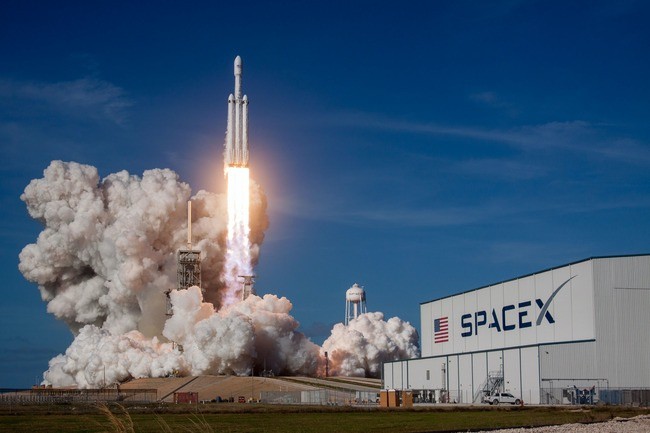
Elon Musk's ventures have long dominated space and electric vehicles. Now, his SpaceX might venture into telecommunications and cell services.
SpaceX recently launched 21 Starlink satellites, six offering direct-to-cell capabilities. This move targets dead zones that plague cell service.
The technology lets phones connect directly to Starlink satellites, bypassing the reliance on cell towers. Musk aims to enable global phone connectivity, particularly in areas with limited access. However, he admits it may not compete with existing cell networks.
SpaceX has partnered with T-Mobile US and gained FCC approval to test this tech. Texting via this system might start this year, while voice and data capabilities could arrive by 2025. Commercial services await further FCC green lights.
SpaceX Teamed up with T-Mobile
Elon Musk's SpaceX has sent the first set of Starlink satellites, which will offer cellular service in remote areas worldwide. These six satellites and direct-to-cell ability should eliminate dead zones by broadcasting cellphone signals from space to handsets on the ground. The deployment was broadcast live, and it managed to place the satellites in low-Earth orbit.
T-Mobile highlighted over half a million square miles in the US and vast oceanic areas lacking terrestrial cellular coverage due to terrain issues. The technology aims to eliminate the need for costly satellite phones, enabling customers to connect using existing devices where the sky is visible.
Musk's cautionary note emphasizes its efficacy in areas lacking cellular service but admits it doesn't compete with existing networks due to lower data throughput. Initially supporting text messaging, these satellites plan to expand to voice, data, and IoT connectivity by 2025.
Beyond T-Mobile's involvement, other carriers like KDDI, Optus, One New Zealand Group, Rogers Communications, and Salt Mobile are exploring partnerships with Starlink for direct-to-cell technology.
In a parallel effort, AT&T partnered with AST SpaceMobile for satellite-based calling, and Verizon collaborated with Amazon's Project Kuiper for remote area coverage.
Apple, with its Phone 14 series, introduced an Emergency SOS via satellite feature for areas without cellular or Wi-Fi connections.
Satellite Integration: SpaceX's Evolution in Cell Connectivity, Why Is It Important
SpaceX's latest move to integrate direct-to-cell technology with its Starlink satellites holds significant implications. With a presence in over 70 countries and a customer base exceeding two million, introducing direct-to-cell features could further broaden Starlink's offerings, boosting its customer reach.
Though specifics about Starlink introducing its phones remain unclear, its technology is designed to enhance connectivity for existing cell phones, offering promise to consumers in rural or dead zone-affected areas.
This development underscores the rising relevance of satellite connectivity for smartphones, with tech giants like Apple incorporating satellite tech in services like emergency SOS on the latest iPhone 15 models.
At the same time, SpaceX's objective of using satellites to enhance cell service could lead to competition with other firms targeting similar goals. Amazon's Project Kuiper with Verizon seeks to improve cell coverage through satellites. 5G voice and data connection tests with space-based satellites were successfully carried out by AST SpaceMobile's satellite constellation initiative backed up by AT&T and Vodafone in September.
Elon Musk is the visionary and CEO of SpaceX; Tesla has diversified its portfolio from simply providing electric cars to include solar energy generation and storage systems for customers combined with direct trading in consumer-generated electricity.
Beyond the current cell phone service plans, Musk's vision can enable remote areas to live at a high-quality level by reducing dependency on old technologies and promoting better living conditions for residents living outside big cities.
Related Article : Thieves Return Stolen Phone, Disappointed It Wasn't An IPhone
© Copyright 2025 Mobile & Apps, All rights reserved. Do not reproduce without permission.












